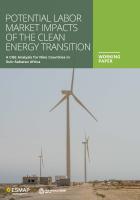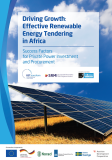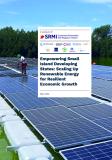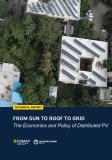Publications
This report presents a first attempt to systematically investigate how the energy transition can support economic activity and contribute to the creation of jobs while advancing the global decarbonization agenda. It is part of a larger effort by the World Bank’s Energy Sector Management Assistance Program (ESMAP) to understand the potential employment impacts of the energy transition. The energy transition - the transition away from fossil fuels that encompasses adoption of new technologies and models of service delivery in the sector - covers investment in renewable energy; grid strengthening to absorb variable renewable power; decentralized power generation; digitization of the energy sector; and a quantum improvement in energy efficiency in buildings, industry, and transport. Many of these investments have significant potential to create local employment and boost economic activity and job creation in the broader economy. In access-deficit countries, increased use of newly provided power for productive purposes is expected to be an important channel for these outcomes. The analysis relies on computable general equilibrium (CGE) modelling of four policy scenarios that support the energy transition in the electricity sector: increases in renewable generation, deeper regional electricity trade integration, increased power reliability, and investments in energy efficiency. For each scenario, the report indicates the labor market and broader macroeconomic effects of the policies. The CGE analysis uses a global model and focuses on nine sub-Saharan African countries that World Bank teams identified as being of particular interest.
Explore More
Case Studies
Rojas Romagosa, Hugo Alexander; Dobrotková, Zuzana; Nicolas, Claire Marion; Pargal, Sheoli. Potential Labor Market Impacts of the Clean Energy Transition - A CGE Analysis for Nine Countries in Sub-Saharan Africa (English). Washington, D.C. : World Bank Group. http://documents.worldbank.org/curated/en/099012324075034298/P1764381dad9a30371890717cdbd8215604




